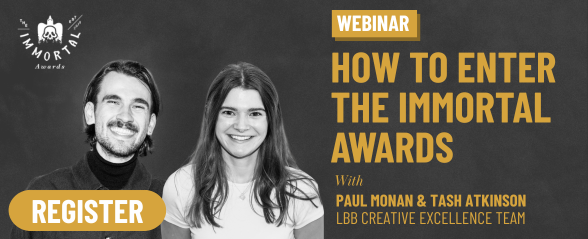
Audio And Radio Have Never Been More Relevant, But “We Need Fresh Ideas That Stop You In Your Tracks”: Joe Public CCO Xolisa Dyeshana

“One of the most unique features about audio is that it is present in almost every medium,” reflects Joe Public’s chief creative officer Xolisa Dyeshana. “If you look at the rise of podcasts, music streaming platforms, social media etc, it actually feels that young people are seeking out audio more than ever before.”
Audio’s omnipresence is fuelling its cultural relevance. According to Ofcom, 93% of people in the UK listen to some form of audio content weekly – be it traditional radio, a curated playlist, or a podcast. Among 16–34-year-olds, this figure rises to 98%. In a fragmented media landscape, audio is cutting through – often because it doesn’t demand visuals, just attention.
Despite the growing role of tech – from AI-generated voices to dynamic audio insertion – Xolisa isn’t interested in tech for tech’s sake.
“I’m hoping to see beyond technology and platforms. I’m hoping to see beyond AI for AI’s sake. I’m hoping to see the one thing that I think we need more than ever: fresh ideas.”
He’s looking for work that surprises and stays with you – campaigns that couldn’t live anywhere else but in sound, that leverage the intimacy and imaginative space audio offers, and that refuse to be formulaic. It’s about ingenuity, not just innovation.
“A truly effective radio campaign is one that has the power to pull you out of your routine and stop you in your tracks. It lingers in your mind long after you’ve heard it. Most importantly, it could never be achieved without audio at its heart.”
Asked to name a campaign that’s stood the test of time, Xolisa points to Skinny’s ‘Phone It In’ by Colenso BBDO – the 2023 Grand Prix winner.
“It brought humour back to the category. It was cheeky, daring, and even made light of the fact that none of the voices used in the campaign would be paid. Instead, it relied on the vanity of each individual to motivate people to participate.”
For Xolisa, the genius lay not just in the audio itself, but in how the campaign blurred the boundaries between media, with OOH elements that encouraged real-world interaction. It was audio, but it was also social, participatory, and culturally savvy.
As the world contends with political polarisation, economic instability and climate uncertainty, Xolisa anticipates that this complexity will show up in this year’s entries – but in more diverse and personal ways than during the global solidarity of the pandemic era.
“I expect a diverse range of topics to be addressed in the work we see, unlike the COVID pandemic era when the world faced a shared challenge.”
At the same time, he remains optimistic about creativity’s role in making sense of chaos and believes that audio offers a unique lens to explore both the micro and the macro.
Young audiences are often thought to have short attention spans, but in audio, they’re proving more engaged than ever – tuning in to deep-dive podcasts, voice-driven TikToks, and algorithmically tailored playlists.
“Young people are seeking out audio more than ever before,” Xolisa says. “It’s present in every facet of culture – which makes it an incredibly rich canvas for creativity.”
Outside the judging room, Xolisa’s focus at Cannes is clear: he’s looking to connect, celebrate and be inspired by creative energy.
“I’m looking forward to networking, to the inspiring talks, catching up with old friends, and just being in the one place where we get to switch off for a week and celebrate the greatest force in the world – creativity.”
With Dyeshana at the helm, the Audio & Radio Lions are poised for a year of craft, courage and creative clarity – where the best ideas will speak loudest, even in the quietest of formats.









